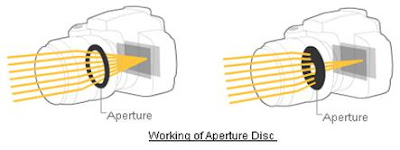Digital SLR Camera Basics
Digital cameras take photographs using an image sensor that converts light to electronic signals. The distinguishing feature of single-lens reflex (SLR) cameras is that the optical viewfinder displays the view through the camera lens.
The “single lens” in the name “single-lens reflex” is a reference to this feature: a single lens serves both for taking photographs and for the viewfinder.
The “reflex” portion refers to the reflection of light. Digital SLR cameras are equipped with mirrors that guide light from the lens into the viewfinder by reflecting it upward, hence the term “reflex.”
The light that is reflected upward falls on the viewfinder focusing screen; after passing through the screen, it then proceeds through a pentaprism or pentamirror to the viewfinder eyepiece window. This allows the photographer to view the image from the camera lens directly in the viewfinder. When the shutter-release button is pressed all the way down, the mirror is raised and the light coming through the lens proceeds straight through to the shutter curtain. The curtain simultaneously opens to allow the light to fall on the image sensor and a photograph is taken. The shutter then closes and the mirror drops back into its original position. By linking the action of the shutter with the movement of the mirror, the light passing through the lens can be made to fall on either the viewfinder focusing screen or the image sensor.
Some newer digital SLR cameras can display the view through the lens in the monitor: this is known as “live view.” The mirror is raised during live view; blocking the light that would otherwise reach the focusing screen and preventing photographs from being framed in the viewfinder.
 |
| The optical path from the Lens through the Mirror to the ViewFinder |
Before the shutter-release button is pressed all the way down, the mirror inside the camera is positioned between the lens and the shutter curtain, reflecting the light from the lens upwards. A pentaprism or pentamirror guides the light into the optical viewfinder. When the shutter-release button is pressed all the way down, the mirror is raised and the shutter curtain opens, allowing the light passing through the lens to proceed directly to the image sensor.
Shutter and Aperture
 |
| Shutter unit |
 |
| Aperture Disc |
The lens has an Aperture or opening consisting of a diaphragm composed of overlapping blades. Changing the aperture value (f-number) changes the size of the opening, in turn changing the amount of light it allows through. The higher the f-number (e.g f/16), the smaller the size of the opening. The lower the f-number (e.g f/2.8), the larger the size of the opening.
The camera controls the amount of light that falls on the ImageSensor by adjusting the length of time the the shutter is open and the size of the aperture.When the shutter is open, light falls on the image sensor. Increasing the time the shutter is open increases the amount of light that falls on the sensor, while reducing the time reduces the amount of light.
Changing the size of the aperture increases or decreases the amount of light passing through the circular diaphragm. Increasing the size of the opening increases the amount of light it lets through, while decreasing the size of the opening decreases the amount of light it lets through.

